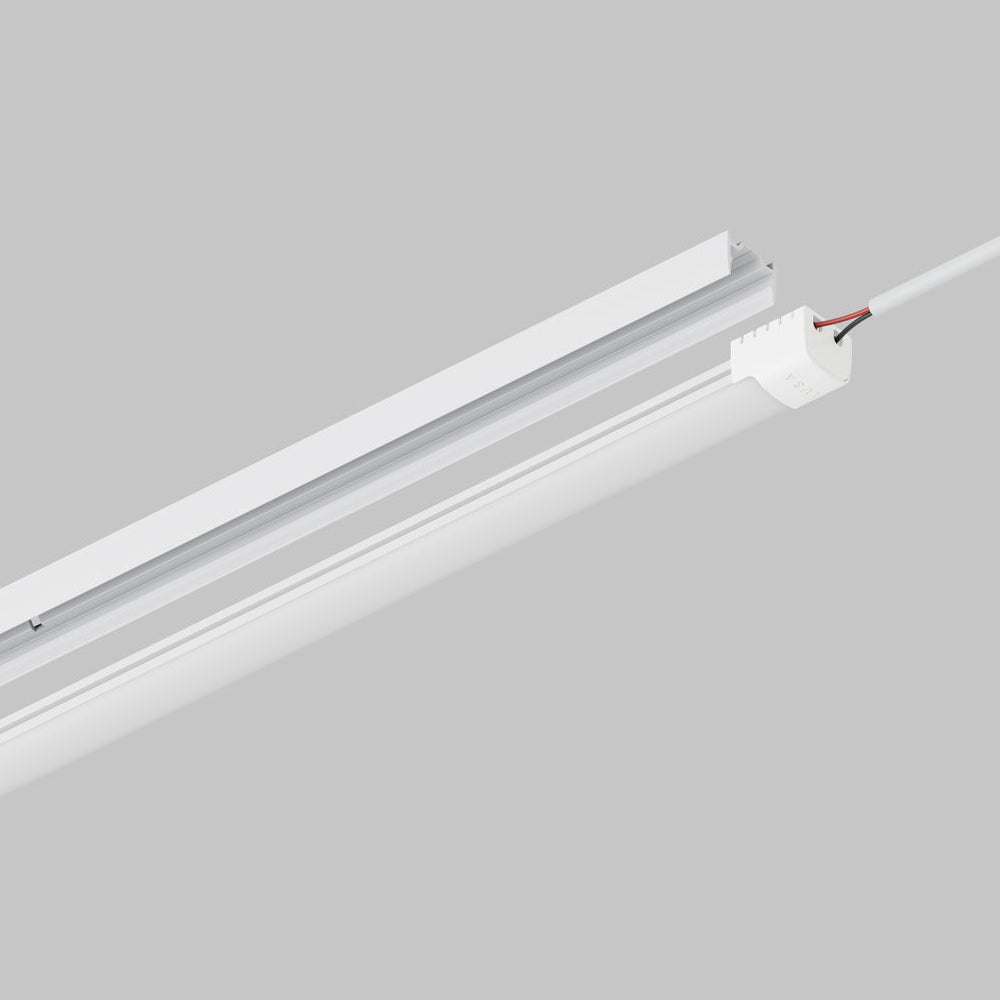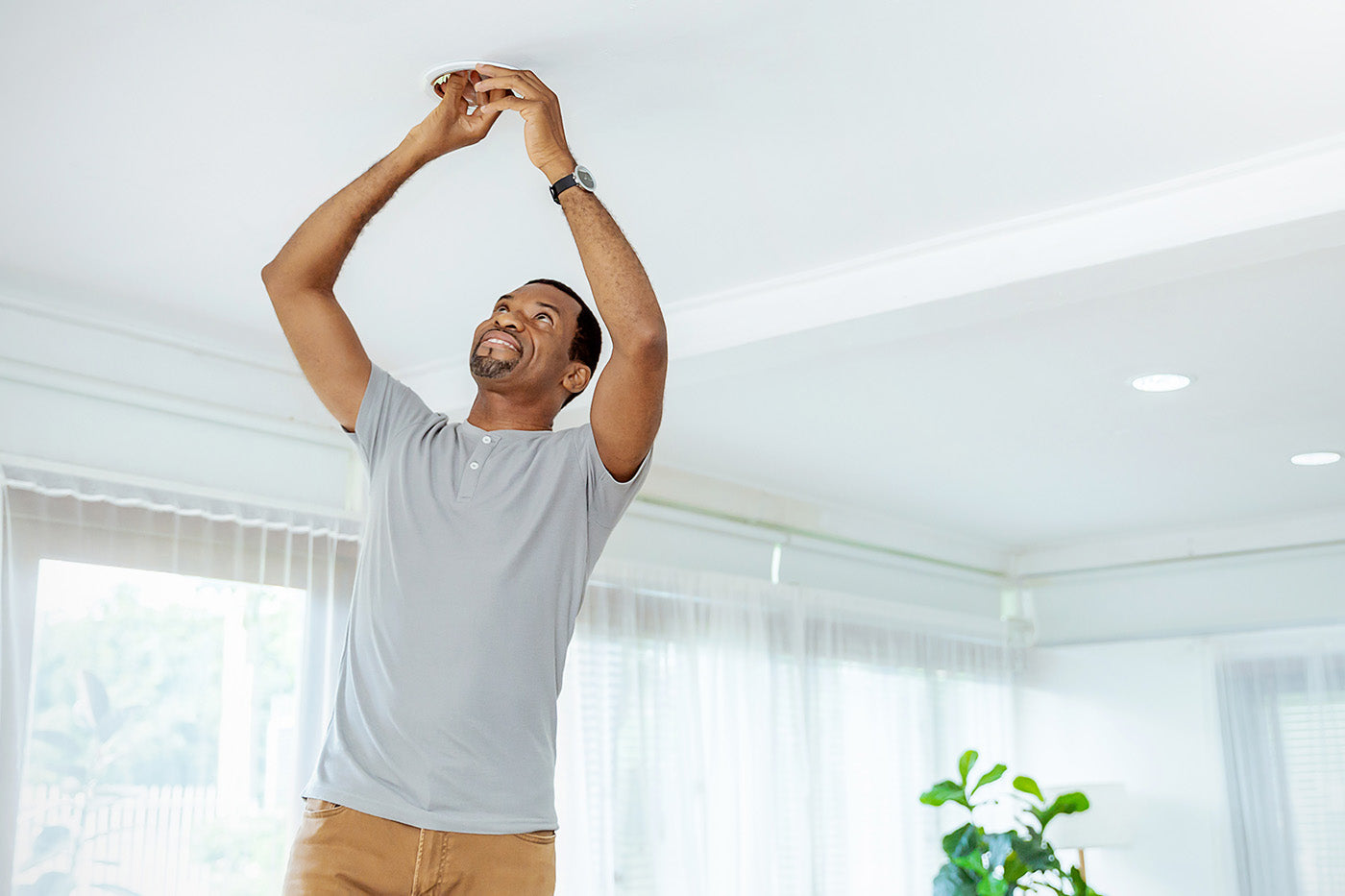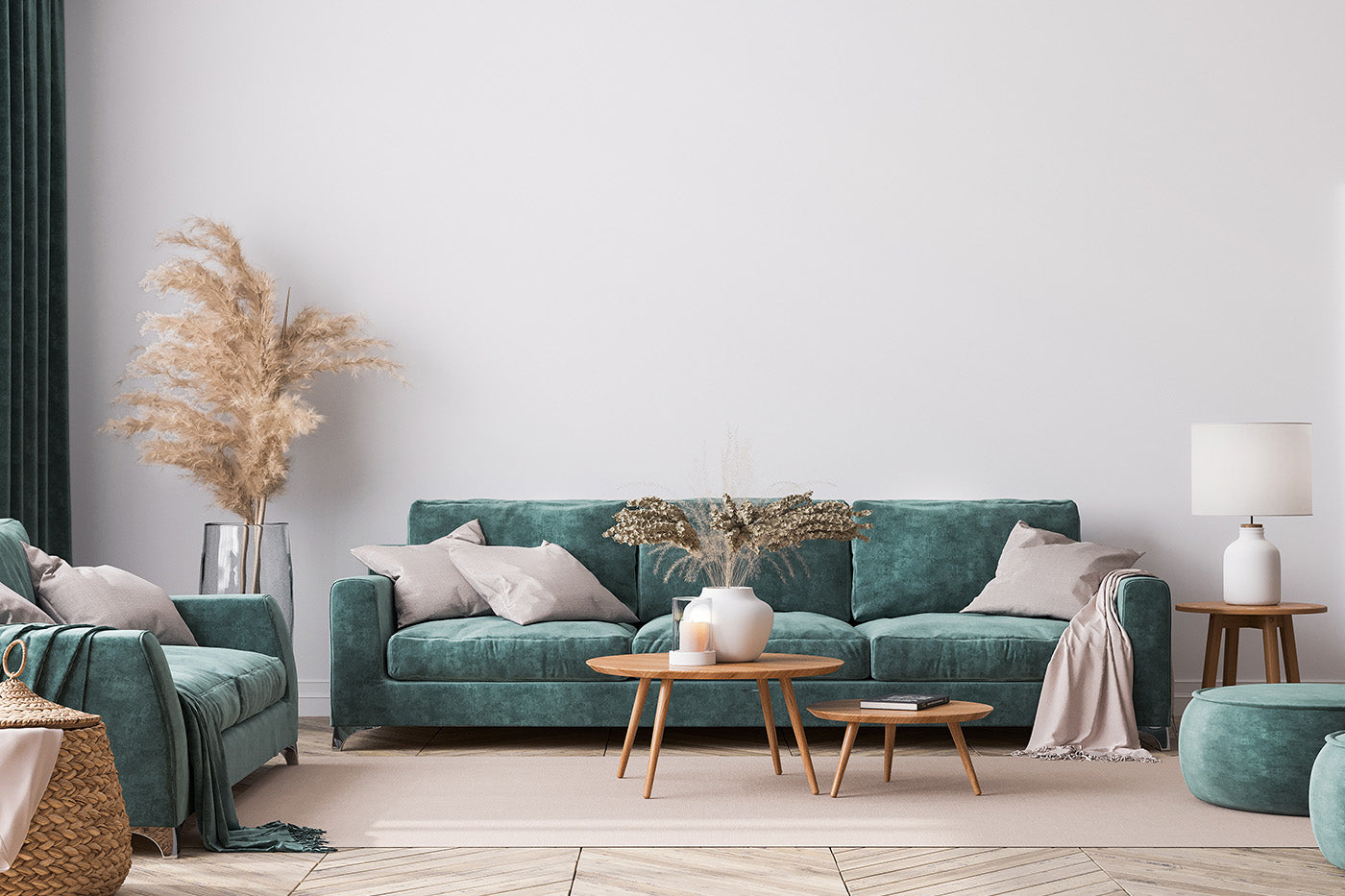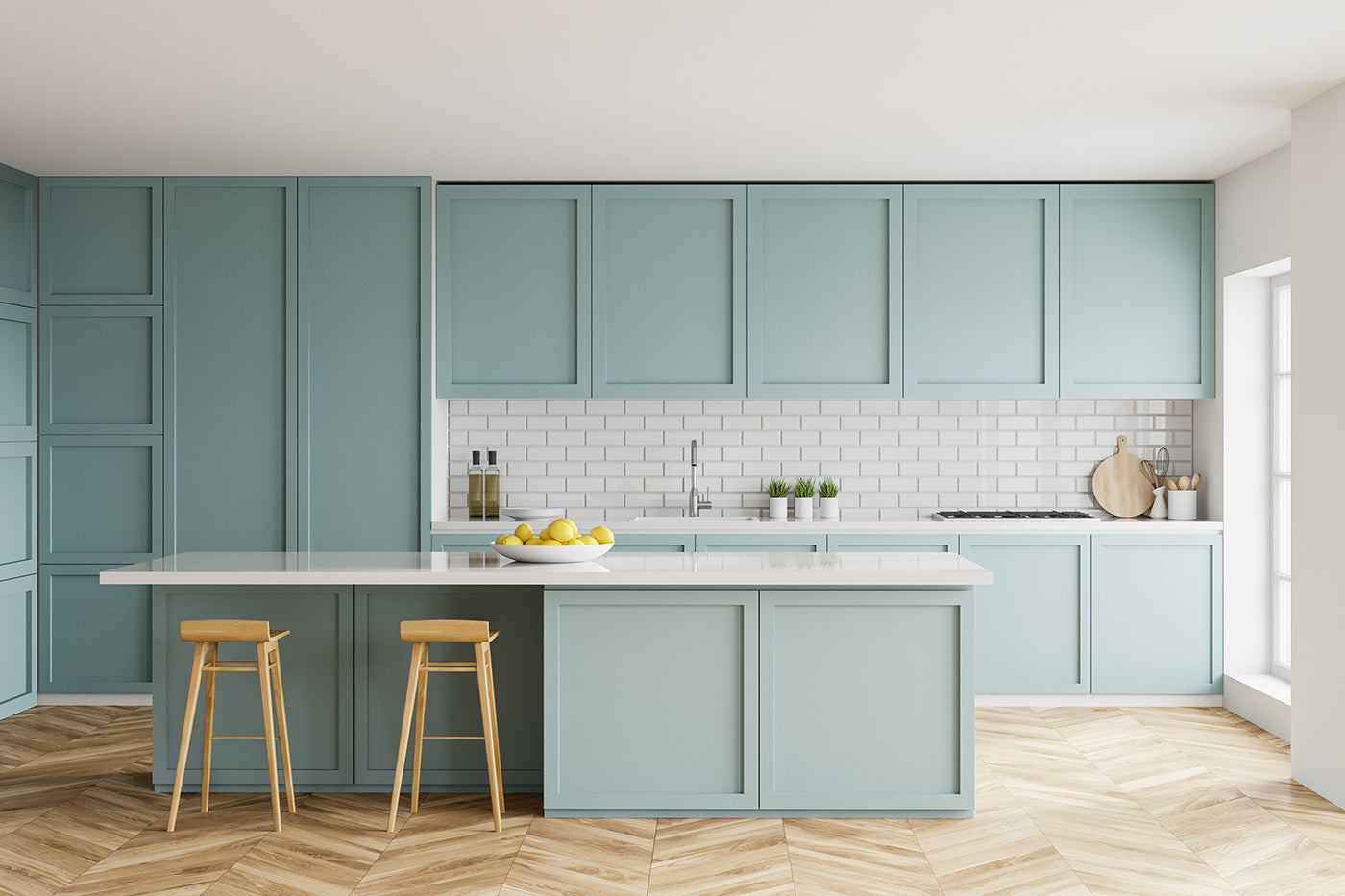Lighting is the essence that transforms a house into a warm, inviting home. It sets the mood, enhances aesthetics, and creates the perfect ambiance for every room.
Among the many lighting options available today, recessed lighting stands out for its elegance, versatility, and the seamless blend it offers to modern interiors. Whether you're building a new home, undertaking a remodel, or simply looking to update your lighting scheme, understanding how to measure and choose the right size recessed lights is essential.
What Is Recessed Lighting?
Recessed lighting, often called downlights, can lights, or pot lights, is a popular lighting fixture designed to be installed into a hollow opening in the ceiling. It offers a clean, streamlined look that is perfect for today's modern home aesthetics.
These lights are highly versatile, serving as task lighting, general lighting, or accent lighting, depending on their placement, bulb type, and trim type. Here's what you need to know:
Overview of Recessed Lighting
At its core, recessed lighting consists of three main components: The housing (also known as the can), the trim, and the light bulb or LED module. Housing is installed above the ceiling line and holds wiring, the light source, and trim.
The trim is the visible part of the fixture that sits flush with the ceiling, while the LED module provides the illumination. Recessed lights can be categorized into several types, including LED downlights, canless LED lights, gimbal lights for directional lighting, and various trim types like baffle and reflector, to cater to different lighting needs and design preferences.
Types of Recessed Lighting
Understanding the different types of recessed lighting is key to selecting the right fixture for your space. LED downlights are energy-efficient and long-lasting, making them popular for most applications.
Canless lights, as the name suggests, do not require traditional housing or can, offering a more streamlined installation ideal for tight spaces or where ceiling access is limited. Ultra-thin LED lights are available however, these lights often produce uncomfortable glare because the light source is at the ceiling versus above it.
Gimbal lights, often called adjustable lights, allow you to adjust the direction of the light, perfect for accent lighting to highlight artwork or architectural features. Reflector trims maximize light output. Adjustable light are also sometimes used with sloped ceilings to aim light type straight down or for a desired aesthetic effect.
What Are the Key Considerations Before Choosing Recessed Lights?
When planning your recessed lighting, several key factors should be considered to ensure that you select the right fixtures for your space. These considerations will help you achieve the desired aesthetic and functional outcomes.
Determining the Purpose
The first step is to identify the primary function of the recessed lights in each room. Will they be used for task lighting in areas like the kitchen or home office, requiring bright, focused light? Or are they intended for general lighting to illuminate the room evenly?
Perhaps you're interested in accent lighting to highlight artwork, architectural features, or other focal points. The purpose will greatly influence the type, placement, and number of fixtures needed.
Room Specifics
Different rooms have different requirements based on their use, size, and existing lighting. For example, a kitchen might benefit from a combination of task lighting over countertops and general lighting to fill the room.
In contrast, living rooms often require a softer, more ambient lighting scheme with the option for accent lighting. Consider the activities that take place in each room, the presence of natural light, and the room’s dimensions when planning your recessed lighting layout.
Technical Aspects
Familiarize yourself with the following technical specifications to make informed decisions:
- Lumens: This measures the amount of light emitted by a source. Higher lumens mean brighter light, which is ideal for task lighting, whereas lower lumens are suitable for ambient or accent lighting. Many of today’s advanced light modules come with a switch that allows you to select between lumen outputs to accommodate your needs.
- Wattage: Understanding the wattage is essential for energy efficiency. LED lights typically offer the same brightness as their incandescent counterparts with much lower wattage.
- Color Temperature: Measured in Kelvins, color temperature affects the warmth or coolness of the light. Warmer lights (lower Kelvins) create a cozy atmosphere, while cooler lights (higher Kelvins) are energizing and better for task lighting.
- Beam Angle: This determines the spread of light from the source. Narrow beam angles are perfect for accent lighting, while wider angles provide general illumination.
How To Measure and Plan for Recessed Lighting
The correct placement and spacing of recessed lights are essential for achieving balanced, effective lighting in your home.
Here's how to measure and plan your layout:
Space Measurement
Start by measuring the length and width of the room to determine the total square footage. As a general rule of thumb, quality fixtures can be spaced approximately six to seven feet apart. Space fixtures more closely — four to six feet apart if you require very bright lighting. Using lower-quality fixtures may require tighter, four-foot spacing to avoid dark spots and may produce uneven lighting distribution. This ensures even coverage without creating overly bright or dark spots.
Choosing the Right Size and Type
Recessed lights come in various sizes, ranging from two to six inches in diameter, with four and six-inch sizes typically used for general lighting and smaller sizes for task or accent lighting.
The type of bulb (LED, incandescent, halogen) will affect the fixture's performance and efficiency, so choose according to your needs and preferences. Additionally, consider the installation type (new construction versus remodel), the rating of the fixtures (IC rated if insulation contact is possible), and the need for airtight fixtures to prevent air leakage.
Installation Considerations
Accurate planning is essential before cutting into your ceiling. It’s advisable to consult with an electrician to ensure that your plan complies with local building codes and to address any potential challenges.
Factors like ceiling joists, existing wiring, and the type of ceiling (drywall, plaster) can all impact the installation process. For new construction, fixtures can be installed directly into the ceiling joists. In contrast, remodel applications require special remodeling housings or canless designs that fit into existing ceilings.
How Can You Enhance Your Home with Smart Features and Design?
Incorporating smart features and paying attention to design aesthetics can elevate the functionality and appearance of your recessed lighting. Modern advancements and design considerations enable you to customize your lighting to suit your lifestyle and enhance your home's ambiance.
Advanced Features
Embrace technology by considering dimmable recessed lights and color-changing temperature (CCT) capabilities. Dimmable lights allow you to adjust the brightness to suit different times of the day or activities, creating the perfect atmosphere for any occasion.
CCT options enable you to change the color temperature of the light from warm for a cozy evening to cool for focus and tasks. Smart lighting systems can integrate with home automation for ease of use, allowing you to control your lights via smartphone apps or voice commands.
LUSA’s recessed LED lighting adjusts the color temperature for you as you dim your lights, adding another advanced element to smart features in home lighting. When turned up, they produce white light for accurate illumination.
When you dim your lights as you settle in for the night, the temperature will adjust to a warmer yellow, creating a cozy and relaxing ambiance.
Design Aesthetics
The recessed light trim's design can significantly impact your space's look and the light it emits. Sleek, minimalist white trims blend seamlessly with modern decor, while other color choices can add architectural flare.
The choice of trim color and finish should harmonize with your ceiling and overall room color scheme. Additionally, selecting airtight and wet-rated fixtures for areas in direct contact with insulation or prone to moisture (like bathrooms) ensures safety and longevity.
Why Does Sustainability and Efficiency Matter?
Today's homeowners are increasingly concerned with energy efficiency and sustainability for environmental impact and cost savings. Recessed lighting, particularly airtight LED options, can contribute significantly to these goals.
- Eco-Friendly Choices: LED lighting is the gold standard for energy-efficient home lighting. LEDs consume significantly less energy than incandescent or halogen bulbs, leading to lower utility bills. They also have a much longer lifespan, reducing the need for frequent replacements and contributing to waste reduction. When selecting recessed lights, look for fixtures that utilize LED technology to enjoy both the aesthetic and environmental benefits.
- Airtight Fixture: Limit temperature transfer from attics to the room below, helping maintain the room temperature below and reducing energy costs to heat and cool a home.
- Certifications and Standards: To ensure you're selecting high-quality, energy-efficient, and safe lighting options, pay attention to certifications and standards. UL certification indicates that the fixture has been tested for safety. Energy Star-rated products meet strict efficiency guidelines set by the U.S. Environmental Protection Agency, ensuring energy efficiency.
Additionally, compliance with California Title-24 JA8 signifies that the lighting is highly efficient, meaning it produces more light per unit of energy and is equipped with advanced features like dimming and accurate color rendering.
Illuminating Choices for Selecting Recessed Lighting
Selecting the right recessed lighting is about creating a home that reflects your style, meets your functional needs, and adheres to your values of sustainability and efficiency.
From understanding the basics of recessed lighting to embracing advanced features and making eco-friendly choices, each step in the decision-making process contributes to your home's overall ambiance and energy.
When it comes to bringing these considerations to life, LUSA stands out in the world of home lighting. With a commitment to high-end designer lighting that enhances every home, LUSA offers precision-engineered solutions that illuminate your spaces beautifully while being kind to the planet.
Our Remodel Recessed Lighting Kit features warm dim and selectable lumen output and is backed by a generous five-year, 50,000-hour warranty, giving you confidence in your purchase. With certifications from Energy Star, UL, Title 24 JA8, and Declare Listed, our lighting solutions are proven to be reliable and efficient.
Let the principles we’ve outlined light your way in making your selection. Doing so will ensure that your home is beautifully lit and reflects thoughtful, informed choices that enhance your quality of life and the world around you.
Sources:
Smart Dimmable LED Lighting Systems | NIH
Light-emitting Diodes A Brief Review and Clinical Experience | NIH
From physics to fixtures to food: current and potential LED efficacy | NIH
Color Temperature Tunable White-Light LED Cluster with Extrahigh Color Rendering Index | NIH



